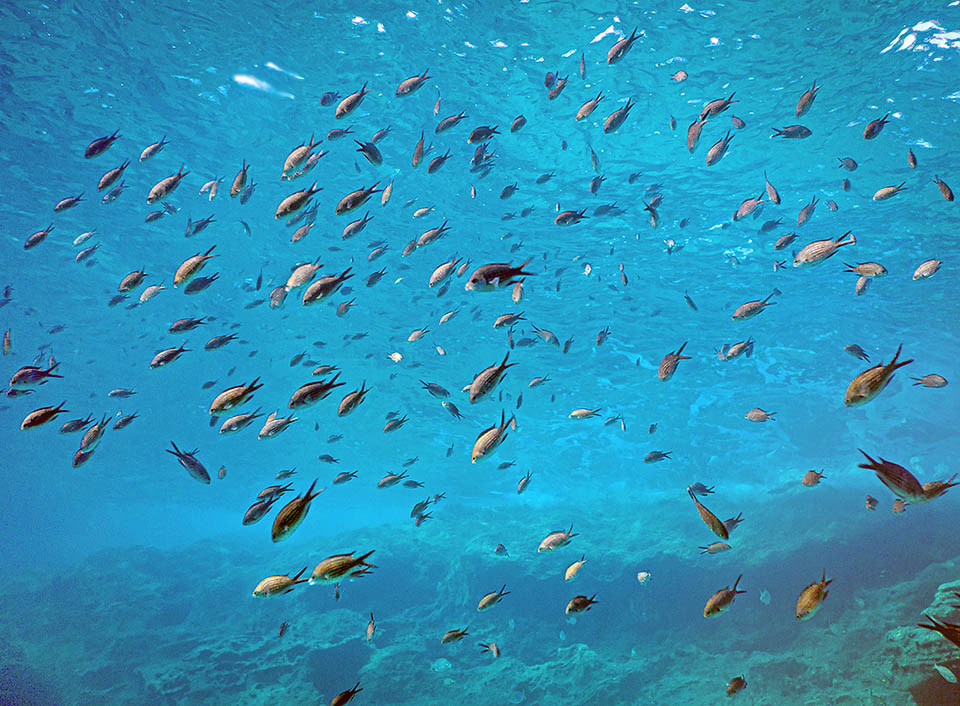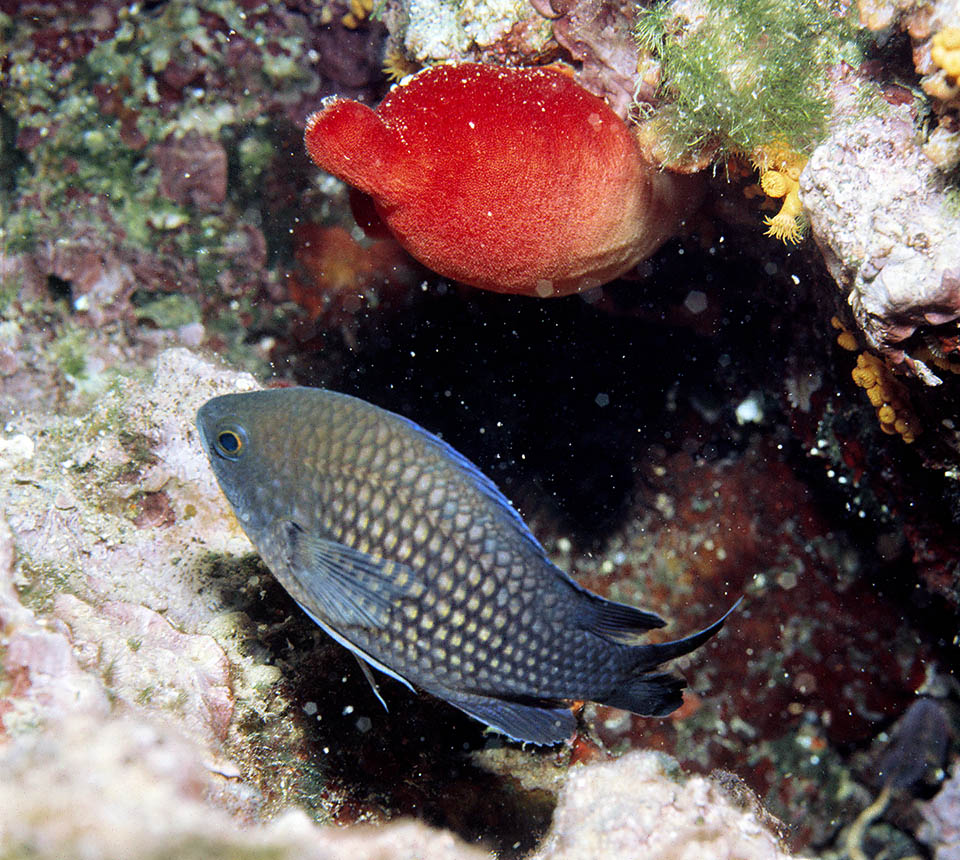Family : Pomacentridae

Text © DrSc Giuliano Russini – Biologist Zoologist

English translation by Mario Beltramini
The Damselfish (Chromis chromis Linnaeus, 1758) is a small sea fish afferent to the class of the Actinopterygii, to the order of Perciformes, to the family of Pomacentridae and to genus Chromis.
The damselfish is the only European member of the family. The members of this family include several tropical species, plus the damselfish which lives in our waters. These fishes, as well as the other species, are not caught because their fleshes are spiny and of poor gastronomic quality.
Zoogeography
The damselfish is diffused, in addition to the Mediterranean also in the eastern Atlantic; a species similar to the Chromis chromis, the Chromis cyanea, where also the adults have a nice clear blue colouration, is present in the Atlantic and is absent in our seas, whilst the Chromis viridis is found in the Indian Ocean, the Pacific and in the Red Sea.

Present in the Mediterranean and in East Atlantic, the Damselfish (Chromis chromis) roams in schools, but in the reproductive time the males get territorial © Paolo Gamba
Ecology-Habitat
The males, in vast schools, populate the bottoms rich of stones; each one takes possession of a quite restricted zone, where a stone is located and defends it against possible intruders devoting to it much attention. The female comes only at a later stage.
Morpho-physiology
Pomacentrids are closely biologically related with wrasses. They have in common the presence of a pharyngeal tooth and the dorsal fin with spiny rays; however, they differ from them for their smaller size and normal lops, instead of being big, protruding and fleshy.
The body of the damselfish, like the other members of the family, is high and convex, both top and bottom, is covered by cycloidal scales rather big. The damselfish is a small fish which does not exceed the 12 cm of length. It diversifies from the other species of the Italian seas because of the livery, which, in the adults, is brown-blackish, whilst in the sub-adults it is uniformly bluish with longer and more fluctuating fns. There is sexual dimorphism.

They take possession of a narrow area, close to a stone, where the female will spawn, anchored by means of filaments © Giuseppe Mazza
Ethology-Reproductive Biology
During the time of coupling, which takes place in July, the damselfishes manifest strange habits: the males, much territorial, take possession of a restricted area in the bottom, where is located a stone, and the female, which comes later on, lays there its eggs, anchored by means of filaments, and then they will be fecundated. During the other periods of the year, these fishes go around in shoals close to coast as well as offshore, and frequent the banks of weeds, nourishing, exclusively, of plankton.
Presently the IUCN identifies its status as “non vulnerable”. The fishing vulnerability index of this species is of 35 over 100.
Synonyms :
Chromis castanea Cuvier, 1814; Chromis mediteranea Cloquet, 1817; Heliastes castanea Cuvier, 1814; Heliastes chromis Linnaeus, 1758; Sparus chromis Linnaeus, 1758.
→ For general information about fishes please click here.
